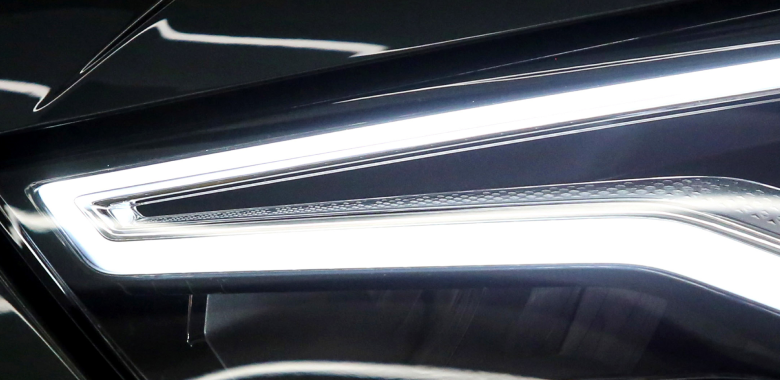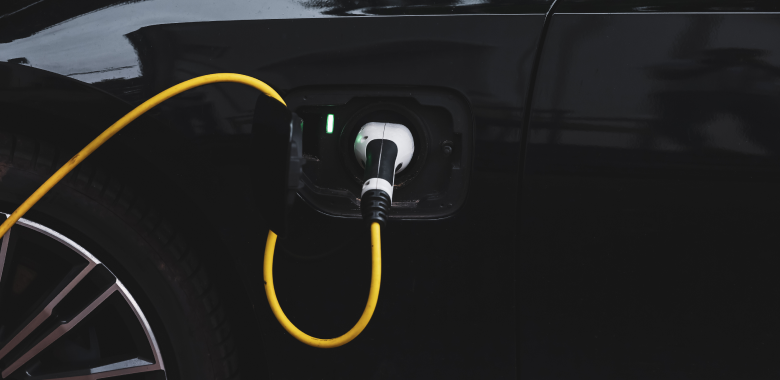Oliver Wyman’s “Mobility Startup Radar”, in its sixth edition this year, identifies the top startups from across the global mobility space — including everything from sustainable mobility and connected and self-driving solutions to ride-hailing and carpooling. While it considers factors such as how much funding a startup attracts, our approach looks beyond size and the best-known players and highlights those with innovative business models, compelling growth stories, and promising outlooks. It is these pioneering entrepreneurs, we believe, who will truly shape the industry’s future.
Mobility startup funding plateaus
After a record $83 billion in 2021, startup funding has leveled off and the once-excessive hype around the mobility sector has waned to some extent. Total investment in 2023 came to $39 billion for the year, a level like that of the previous year ($40 billion). Much of the difficulty startups encounter today securing financial resources can be attributed to ongoing economic uncertainty globally and regional conflicts and political crises. Given how much funding most young mobility companies need to bring new solutions to market, the trend suggests the potential for a slowdown in mobility innovation.
But while total investment flow was flat, and the number of funding rounds declined 27% for the year, the size of those rounds increased significantly, to an average of $52 million from $39 million in 2022 — the second-highest figure in the past decade. The year also saw around 60 so-called mega-rounds of $100 million or more.
The new investment pattern signals a heightened aversion to risk on the part of investors, following some recent prominent mobility startup failures, as well as a decision to concentrate investment in the select group deemed safest. That’s good news for more-established mobility businesses seeking late-stage investments.
On the other hand, it’s a difficult environment in which to raise capital for early-stage startups, not yet posting profits or revenue, in need of new funding to reach commercial scale. Those fears could put a damper on more experimental technologies and business models.
US startups dominate
While overall funding for mobility investments didn’t grow in 2023, mobility startups in North America managed to grab roughly half of the investment versus 46% the year before. The vast bulk of that investment went to startups in the United States and was driven in large part by incentives provided by the US Inflation Reduction Act (IRA). The IRA provided incentives and subsidies to encourage investment in such areas as electric battery research and US-based battery production to help US business compete more effectively against China on electric vehicles. The IRA was passed in August 2022 and its first impact was felt in the fourth quarter of 2022.
In contrast, the percentage of funding to European mobility startups shrank to about 15%, down from 20% in 2022. Once again, the region fell behind both the US and Asia after beating Asia for second place in the Radar in 2022. Funding rounds also were considerably smaller in Europe than in the US and Asia. The average funding size for European startups was $27.5 million, compared with $79.6 million in North America and $78.7 million in Asia. The drop-off in European mobility funding is tied to less support for scooter companies, which went from $800 million in 2022 to zero in 2023, and a reduction in car subscription startup funding.
Meanwhile, in India, economic development, combined with an expanding ban on Chinese apps and services, has nurtured a blossoming domestic mobility services industry. Since 2020 India has banned literally hundreds of Chinese apps — many of which related to mobility. As a result, Indian mobility services like ride-hailing platforms have sprung up and flourished.
In 2023, mobility services also started to attract investment capital. Despite an overall dip in Indian startup investment, funding for the mobility services segment — which includes ride-hailing, scooter sharing, and connected mobility apps — rose to $1.7 billion, up from $1 billion, in 2022. This Indian segment now represents 69% of Asian mobility services, up from 43%, and 25% of the segment globally, up from 13%.
A boom in sustainable mobility funding
Mobility can be divided into four main clusters:
- Sustainable mobility, which in addition to electric vehicles (EVs) includes fuel cell solutions and other technologies for cleaner vehicles
- Mobility services, such as ride-hailing, carpooling, and other on-demand offerings
- Connected and self-driving connectivity hardware and solutions, as well as other autonomous systems
- Sales/Aftersales, including online marketplaces, dealership services, and insurance
Sustainable mobility was the top segment worldwide in terms of total funding by far, and the only one that grew from 2022. The segment increased 42% to $21 billion, primarily driven by investments in battery and charging solutions, as well as investments in Asian EV original equipment manufacturers (OEMs). While the EV share of the total automotive marketplace is still small, EV automakers and their parts suppliers need huge amounts of cash to build the additional production capacity required to increase scale. Only when they’ve done that can they implement the significant battery improvements and cost reductions that will allow them to begin generating revenue — and ultimately profits.
Mobility services, historically the strongest of the four segments, saw its share of overall mobility startup investment plummet in 2023 to less than one-third of sustainable mobility funding. Overall, the segment attracted $6.7 billion, down from $7.7 billion in 2022. In Europe alone, mobility services funding dropped 82% in 2023. Economic uncertainty has been a factor in the decline, given the time mobility services often require to break even as well as the cutthroat competition that often characterizes the segment.
Funding for connected and self-driving startups also dropped, 23% below the previous year. The autonomous vehicles (AV) sector dropped to $7 billion from $9.2 billion, driven in large part by a fall in US funding. While the dip reflects safety concerns and economic factors, it also is a product of the substantial funding the biggest US players received in 2022. On the other hand, Europe saw its funding rise to $1.6 billion, as the United Kingdom works to position itself as a third global hub for AVs after China and the US.
Funding for sales and after-sales decreased 52% to $4 billion globally, despite help from the adoption of artificial intelligence (AI) technologies. Investment dollars are mainly allocated to startups focusing on financing platforms or aftersales services in insurance or maintenance. Meanwhile, used car sales platforms, which drove funding in past years, had trouble attracting financing given their lack of proven profitability as well as increased competition from OEMs that have transitioned to direct sales.
Rising generative AI funding

Generative AI startups collected more than three times the funding in 2023 — $1.2 billion more than they had raised in 2022 when the total was about $500 million. Funding was mainly centered in the US and China, given the continued absence of viable players in Europe. Consumer-facing generative AI applications are trendy, collecting twice the funding of non-consumer-facing applications between 2021 and 2023. However, there is greater potential on the non-consumer side, such as for autonomous driving and production process optimization.
In the long-term, startups will integrate generative AI into their portfolios and compete to win large contracts with OEMs. That will leave few startups remaining as OEMs leverage existing large-language models and adapt them in-house to their specific needs. Already several leading European and Asian automakers have been using generative AI technology to improve their vehicle design and production processes, among other purposes.
The hot category of battery technology

In recent years, there has been a surge in venture capital investment in technology supporting the full battery lifecycle — from mining and processing right through to recycling. China traditionally has been the unquestioned leader in the space, but the IRA and efforts to bring supply chains closer to manufacturing have enabled the US to catch up. Between 2021 and 2023, US startups collected $9.8 billion in funding, compared with $5.3 billion for Chinese startups.
Future innovations are most likely to come from startups in three categories within the battery value chain. The first — and largest in terms of funding, with more than $8 billion globally in 2023 — is battery manufacturing. Investors already are pouring money into solid state, lithium-sulfur, sodium-ion, and lithium-air technologies, though their impact on the EV battery market is not expected to be significant before 2030.
The second is battery services, which drew more than $1.3 billion in investment in 2023. Companies that help customers swap fully charged batteries in for depleted ones have gotten the bulk of that funding. So far startups have focused on the micro-mobility market but have had only limited success in the EV sector.
The third category, funded with more than $3.8 billion, is battery reuse and recycling. The end-of-life cycle from EV batteries presents significant growth opportunities: Over 100 million batteries are expected to be retired in the next decade, and 40% of battery materials in new EVs could come from recycled stock by 2040.

